The coastline of California is 840 miles long with the cooler northwestern waters near the north and warmer tropical waters off of San Diego. More shark sightings are reported off the coast of California during the summer months. We have all read the headlines of shark attacks and may be a bit wary each time we visit the beach, but what kind of sharks are off the coast of California? There are some that are common and harmless, and others that beach goers need to be concerned about. Let’s find out about 8 sharks off the coast of California.
8. Angel Shark

You won’t see an ominous dorsal fin cutting through the water with an angel shark. They hide at the bottom of the ocean camouflaged in the sand.
©LuisMiguelEstevez/Shutterstock.com
With a name like angel shark these can’t possibly be dangerous, right? In fact, they are not dangerous and if you see one you may not even know it’s a shark. Angel sharks almost look more like stingrays because of their wide, flat bodies. They blend in well with the sandy ocean bottom and wait for their prey. Some can get to be more than 5 feet long. The most common time to see them is during the fall and winter when they show up along the San Diego coast.
7. Leopard Shark
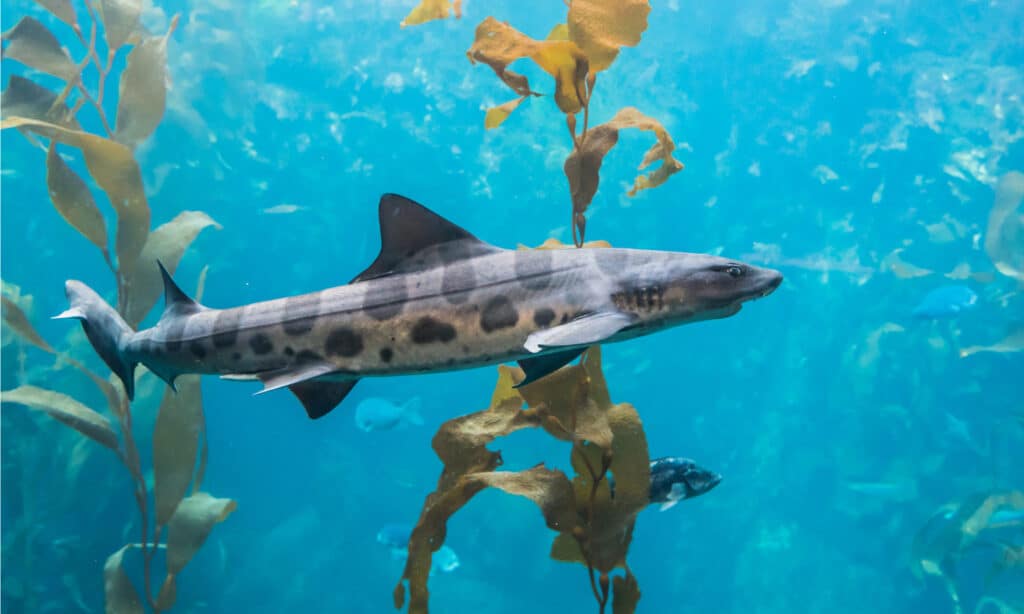
One of the sharks off the coast of California is the
Leopard
shark. Thousands show up off the coast of San Diego during August and Septemeber.
©David A Litman/Shutterstock.com
Another common shark off the coast of California is the leopard shark. These show up by the thousands off the San Diego coast near La Jolla shores. During the summer, divers report being able to swim with hundreds of these 4-5 foot sharks and you can book a dive tour if you want a first hand experience. The best time to see them is in August and September when many of the females return to give birth. Leopard sharks get their name from their leopard print coloration with dark brown spots. They really do have amazing markings, especially for a shark.
6. Smooth Hammerhead Shark
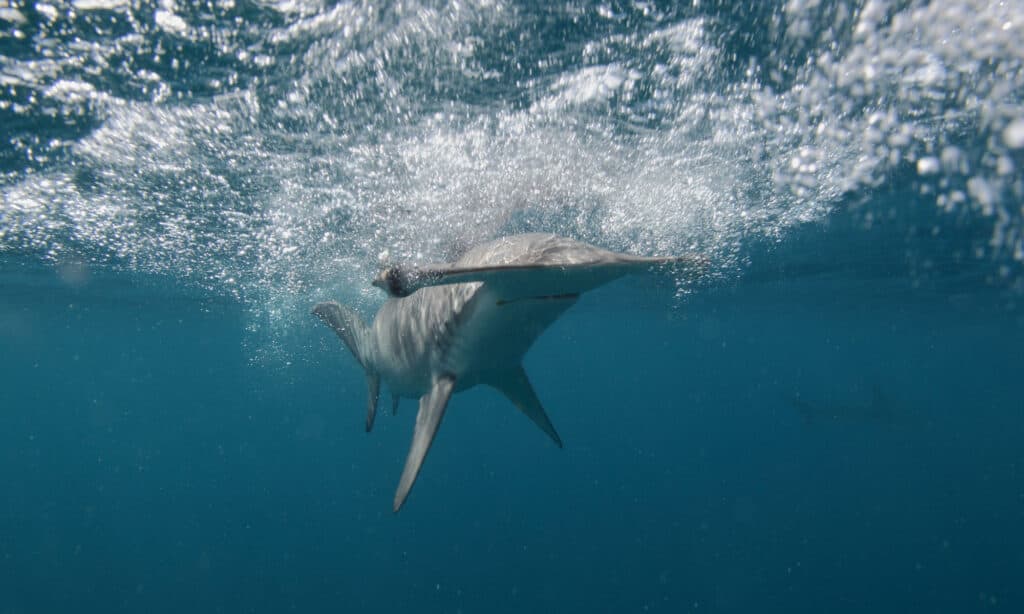
Their eyeballs are on the ends of their hammer-shaped head! Definitely a unique looking shark.
©Alessandro De Maddalena/Shutterstock.com
Hammerhead sharks are named for the unique hammer-shaped heads. Their small mouth is located under the wide head with eyes at the ends. Smooth hammerheads can get to be relatively large, around 16 feet making them the second largest of the hammerhead sharks. The smooth ones have a smooth front of the head giving them their name. In California, you can find them off the coast of central California all the way down past San Diego continuing down the coast. Although encounters with humans are not that frequent, their cousin the great hammerhead is larger and responsible for 16 attacks on humans in history.
5. Broadnose Sevengill Shark

Broadnose Sevengill Shark’s return to the California coast yearly to mate.
©Tomas Kotouc/Shutterstock.com
The broadnose sevengill shark can be found off the coast of California in the central coastline. Between March and May you may find them in southern California in the La Jolla and Point Loma area where they return every year to mate. The unique features of the broadnose seven-gill are the rounded tip of the nose, the seven gills instead of 5 and only one dorsal fin (most sharks have two). You may see them in shallow waters looking for crabs and rays or out further looking for food along the continental shelf.
4. Thresher Shark
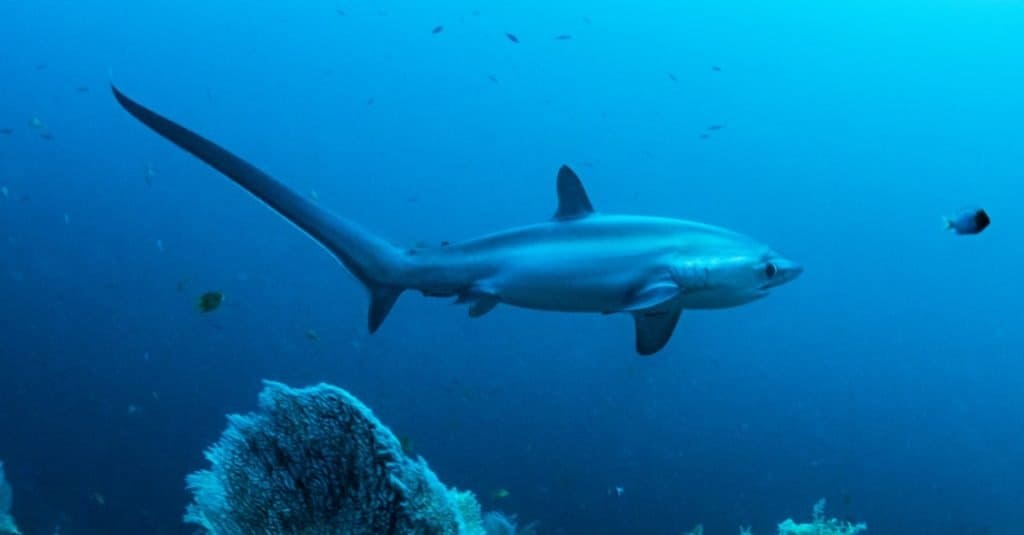
Look at the size of that tail!
Thresher sharks
have a whip-like tail that they use to stun their prey.
©Shane Gross/Shutterstock.com
You can quickly identify a thresher shark by its long whip-like tail. This is how they got their name, they use their powerful tail to whip prey stunning them so they can make the kill. They also have a purplish hue to them making them even more unique. They are smaller bodied but can get to be 20 feet long. Usually they are out in deeper waters with few human interactions. The only documented “attack” with humans was from a provoked attack when someone grabbed a thresher’s tail.
3. Mako Shark
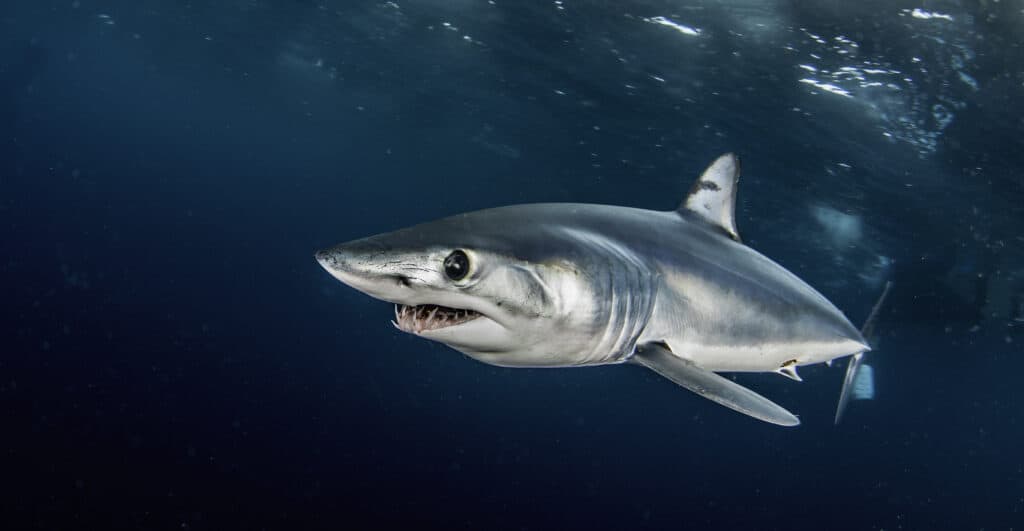
One of the sharks off the coast of California is the big-eyed Mako shark. Look at how menacing they look!
©wildestanimal/Shutterstock.com
The first thing you notice with Mako sharks are their big black eyes, I mean really big! They have a traditional shark shape with a pointed snout with a sharp-toothed menacing grin. Mako’s get to be around 10 feet long and weigh about 300 pounds. Although not the biggest fish in the sea they have the most powerful bite (second only to crocodiles!). They have a bite force that is 3,000 lbs. of force or 13,000 newtons… trust us, that is powerful! These big-eyed sharks can be found from the southern edge of Washington state all the way down to Mexico.
2. Blue Shark
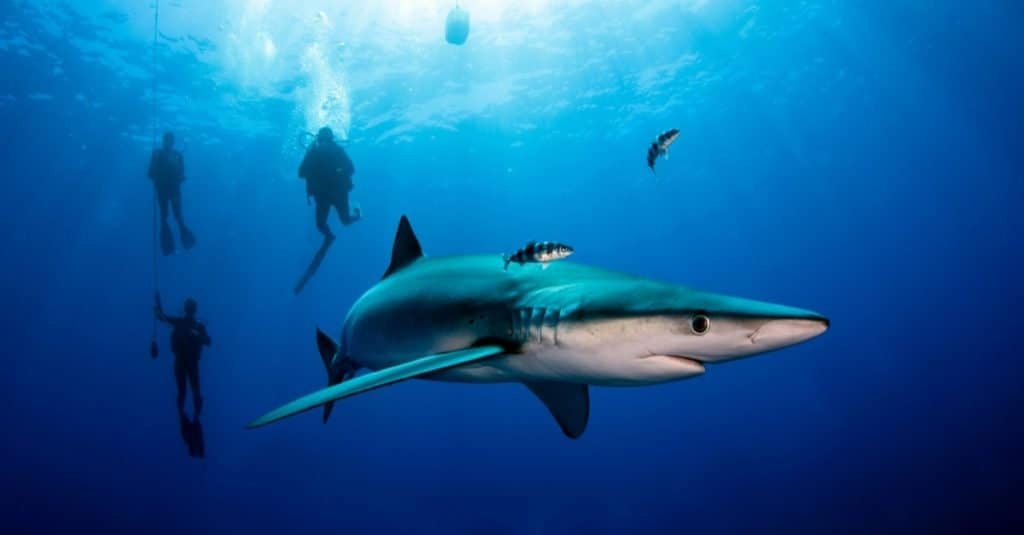
Blue sharks have a long narrow snout and average 5-7 feet long.
©Vladislav Klimin/Shutterstock.com
One of the most populous sharks off the coast of California is the blue shark. They get their name from their cool blue coloration and they have a contrasting white belly. Blue sharks can be found off the coast of southern California down to Mexico and further. They are a skinnier shark that averages 5-7 feet long and weighs around 300 pounds. You will typically find blue sharks out in deeper waters looking for squid, their favorite prey. There are only 12 recorded attacks on humans, so these are not an overly aggressive shark.
1. Great White Shark
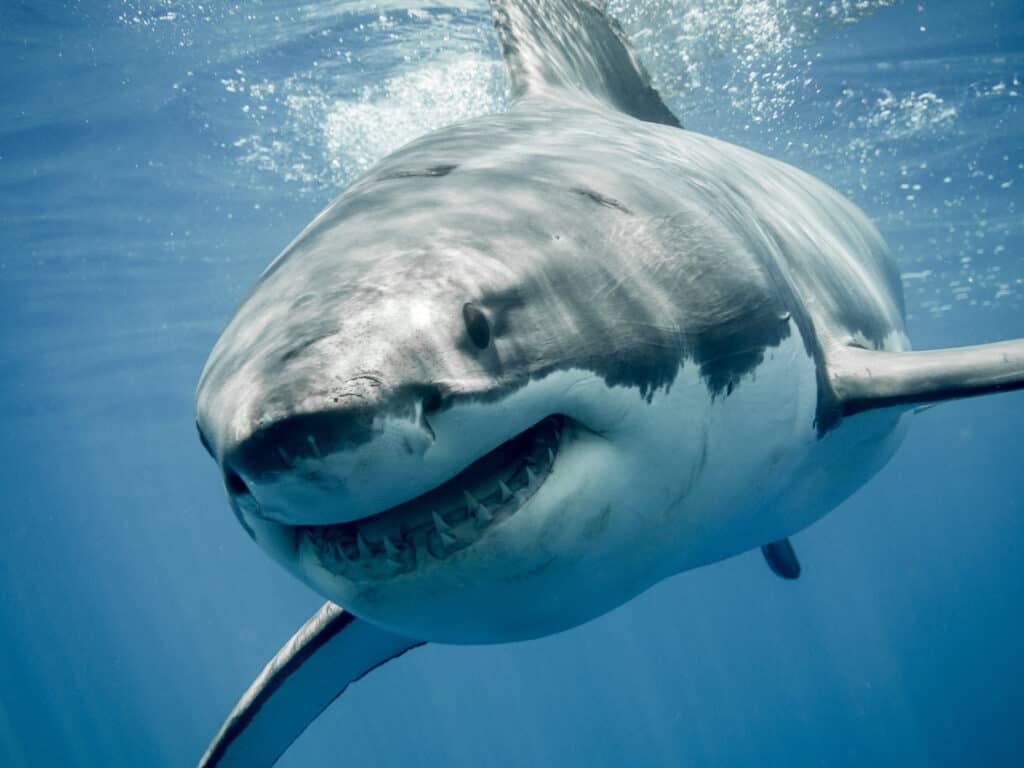
One of the most dangerous sharks off the coast of California is the
great white shark
.
©Ramon Carretero/Shutterstock.com
The sharks that get the worst rap are the great white sharks, but in some ways they have earned it. Statistically, great whites do have the most attacks on humans and the most fatalities. There have been 333 recorded attacks on humans with 52 fatalities. On June 22, 2022, Steve Bruemmer was attacked by a great white swimming off of Lover’s Point at Pacific Grove, California. He suffered bites to his arms, leg and stomach. Luckily he survived but was rushed to the hospital with severe wounds. Two standup paddle boarders nearby came to his rescue and brought him to shore. Three weeks later Bruemmer was released from the hospital, the trauma surgeon reported that the shark just missed severing a major artery. Based on the size of the bite wounds, officials believe the great white was one of the biggest great whites recorded at 20 feet! Great white sharks are one of the 8 sharks off the coast of California and one of the most dangerous!
The photo featured at the top of this post is © iStock.com/s1murg
Thank you for reading! Have some feedback for us? Contact the AZ Animals editorial team.






